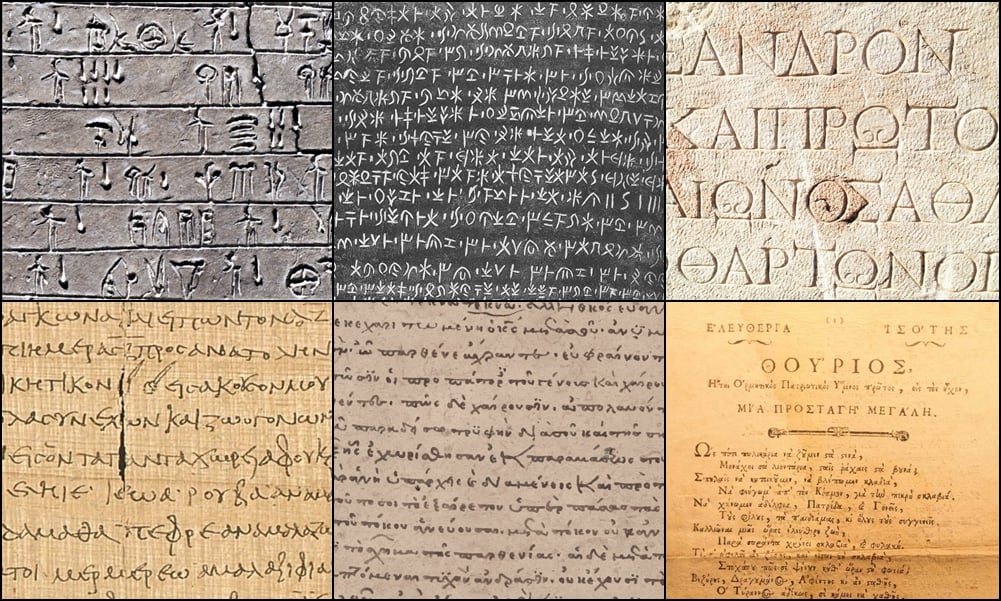
Among the world’s 2,700 languages, Greek stands out for its centuries-long, unique and continuous path. If we also consider the influence it exerted—both in terms of formation and content—on European as well as other languages, Greek is, without exaggeration, perhaps the most important language in the world.
Τhe “software” of language exists in human beings to serve the “software” of the mind. Therefore, every struggle for our languages is ultimately a struggle for our thinking, and each national language is eminently worthy and not just a mere tool. If we further dive into the history of our languages and try to invest a proper use of them, we basically contribute to our critical ability.
Greek culture excelled, preserved, and spread as a culture of the written word and as a culture of extremely important written texts. For this very reason, we must respect this language, recognize its value, and understand its history.
As the famous Greek poet Odysseus Elytis once said in his meaningful Nobel lecture: “In each of these twenty-five centuries and without any interruption, poetry has been written in Greek. It is this collection of given facts which makes the great weight of tradition lifted by this instrument.”
Greek Language: A Unique Historical & Contemporary Phenomenon of Culture and Human Creation
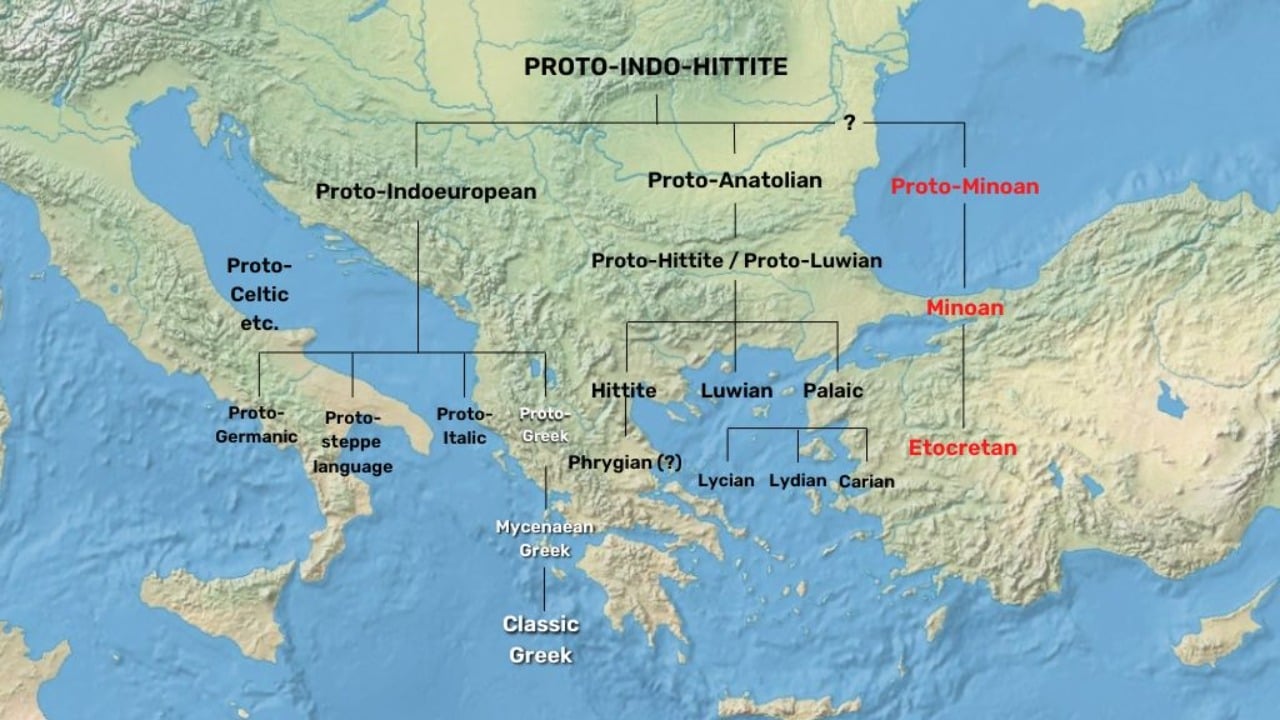
Τhe Greek language holds a special place amongst the over seven thousand languages of the world of which, it must be noted, only twenty-three are actually utilized by over half of the world population. Of these thousands of languages, however, Greek remains a language with high communicative validity and prestige. It occupies an oral tradition of at least 4,000 years and a written tradition of 3,500 years, a fact that makes it a unique example of a language with unbroken historical continuity and with such structural and lexical coherence as to allow experts to speak of an undivided Greek language from antiquity to the present day.
As is well known, Greek is a unique example for linguists in terms of the study of the evolution of a natural language over such a length of time. This makes it the oldest living language in the world with a homogeneous development even when compared to exceptional cases of languages such as Chinese, which survived only as a philological language, and Sanskrit, which survived only in limited and specialized uses of archaic—especially religious—language.
It is true that all languages of peoples as systems of communication are of equal value, but it is also true that certain languages, which have borne the weight of developed forms of human culture, have experienced a cultivation that distinguishes them from others.
Such is also the case with the Greek language since it was in constant, robust formation for more than thirty centuries in the expression of subtle concepts of philosophy and science, coarse concepts of political discourse and state institutions, complex concepts of evangelical discourse and patristic theology, and deep contemplative concepts of ancient drama, prose, and poetry. It is no coincidence that the international scientific language today is heavily dependent on Greeks roots, words, and components in formulating the jargon of various areas of science.
The Greeks themselves were the first to study the Greek language, the analysis of which became, through Latin, the basis of the analysis of all later languages. The ancient Indian grammarians may have predated the writing of the first grammar (Aṣṭādhyāyī), but Pāṇini’s grammar did not become known worldwide before the 19th century and, therefore, did not influence the general development of linguistics in the West.
Τhe supreme quality of the Greek language is certified in various ways. First of all, the Greek language has absolute syntactic flexibility-elasticity, greater than any other language. It is not merely semiotic; it is conceptual. Greek, particularly, has a unique component, which lies in the approximation of the distance between the signifier (the phonemes of the word) and the signified (the meaning of the word), which is not observed in other languages. Greek also possesses the notorious “mathematical structure” in the way words are composed.
General Features of the Greek Language
Greek is an independent branch of the Indo-European family of languages native to Greece, Cyprus, southern Italy, Albania, and other regions of the Balkans, the Black Sea coast, Asia Minor, and the Eastern Mediterranean. It has the longest documented history of any Indo-European language, spanning at least 3,400 years of written records. The Greek language is thus an independent branch of the Indo-European family, i.e. a “subgroup” of its own. Indeed, it is considered to be a rather conservative Indo-European language.
Its writing system is the Greek alphabet, which has been used for approximately 2,800 years to this day. Previously, Greek was recorded in syllabic writing systems such as Mycenaean Linear B and the Cypriot syllabary. The alphabet arose from the Phoenician script and was, in turn, the basis for the Latin, Cyrillic, Armenian, Coptic, and Gothic writing systems among many others.

The earliest written evidence is a Linear B clay tablet found in Messenia that dates to between 1450 and 1350 BC, making Greek the world’s oldest recorded living language. Amongst Indo-European languages, its date of earliest written attestation is matched only by the now-extinct Anatolian languages.
In antiquity, Greek was by far the most widely spoken lingua franca in the Mediterranean world. It eventually became the official language of the Byzantine Empire and developed into Medieval Greek. In its modern form, Greek is the official language of Greece and Cyprus and one of the twenty-four official languages of the European Union. It is spoken by at least 13.5 million people today in the Greek states and the many other countries where the Greek diaspora resides.
Historical Periods of the Greek Language
Proto-Greek
Proto-Greek is classified as the unrecorded but assumed last ancestor of all known varieties of Greek. One of the biggest archaeognostic problems is that of the “first coming of the Greeks.” However, what should concern modern research should not be when the Greeks first appeared but when the Greek language was first formed. It is a language that must be qualified as a criterion for the objective and timeless formation of human groups.
Thus, it is wise to speak of an ancient proto-Greek language only after its formation as a recognizable distinct branch of the Indo-European linguistic family. In the case of the proto-Greeks, instead of looking for the “arrival” of an ethnic group, it would be preferable to pay more attention to the formation conditions of a particular language.
Τhe period of the first recording of the Greek language (Mycenaean, 15th century BC) should not be considered the period of its linguistic bifurcation nor of its first “appearance” in Greece. The chronological “windows” that have been proposed as candidates for the “entry” of the Greek language into the Greek mainland (Middle Bronze Age, 3rd millennium BC, Neolithic period) seem to be gradually debunked thanks to the archaeological evidence of continuity/discontinuity of the prehistoric habitation in the Greek peninsula. Today, we can safely assume that the potential for localization of the Greek language has a fact much earlier, deeper roots in time.
In addition to this, the latest findings suggest that the time scale of the IE linguistic problem must now grow exponentially. There are very interesting remarks on an archaeological (though not only) basis about the linguistic landscape of the Paleolithic Age, a chronological period which seems to constitute a first cultural and linguistic unity in Europe, perhaps particularly during the Upper Paleolithic.
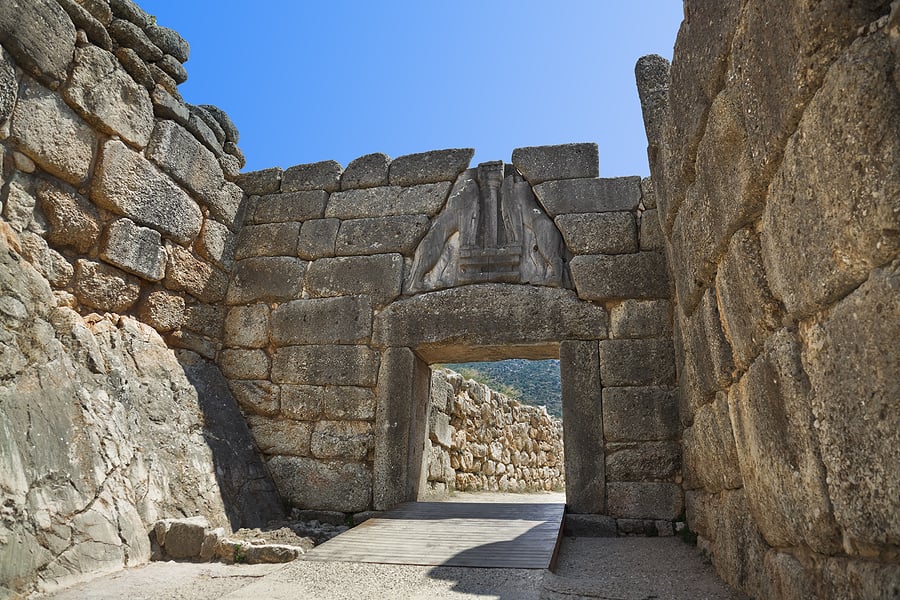
Mycenaean Greek
Mycenaean Greek is the most ancient attested form of the Greek language, dating back to the 16th to 12th centuries BC prior to the hypothesized “Dorian invasion,” formerly cited as the terminus ad quem for the introduction of the Greek language from northern lands. The language is named after Mycenae, one of the major centers of Mycenaean Greece and is preserved in inscriptions in Linear B script on clay tablets found on Crete, the Peloponnese, and other parts of southern Greece. The texts on these tablets are accounting administrative documents comprised mostly of lists and inventories.
Experts suggest that Mycenaean preserves some archaic Proto-Indo-European and Proto-Greek features not present in later historic ancient Greek. While the Mycenaean dialect seems relatively uniform at all the centers where it is found and despite the different time periods of its use, there are also a few traces of dialectal variants. The unprejudiced study of the tablets led many to the opinion that Mycenaean Greek is uniform not because it reflects the linguistic reality of its time but, on the contrary, because it does not.
Τhis curious hyperlocal and possibly intertemporal homogeneity of the linguistic form of the Mycenaean tablets (Mycenaean koine) suggests that we are dealing with a supra-locally common artificial idiom of administrative use of palace records and the ruling aristocracy. This is what Swiss Hellenist Ernst Risch called “normal Mycenaean.”
On the other hand, “special Mycenaean” represented some local vernacular dialect (or dialects) of the particular scribes producing the tablets. When the “Mycenaean koine” fell into disuse after the fall of the palaces because the script was no longer used, the underlying dialects would have continued to develop in their own ways.
The interesting thing is that the language of the tablets, being a special, archaic linguistic idiom, testifies to the existence during the Mycenaean period of an element characteristic of languages, which, already at that point in time, have a long history. This defining characteristic would be the formation of archaization.
While the use of Mycenaean Greek may have ceased with the fall of the Mycenaean palaces, some traces of it are found in later Greek dialects. In particular, Arcadocypriot Greek is believed to be rather close to Mycenaean Greek. Arcadocypriot was an ancient Greek dialect spoken in Arcadia (central Peloponnese) and then in Cyprus perhaps due to the migrations that took place during the so-called Bronze Age Collapse.
It is also noteworthy that the Mycenaean form of the Greek language does not contain elements of the Doric dialect, but it is also not completely identical to any of the other dialects of historic period, as we know them.
Ancient Greek
Ancient Greek is the language of the “Dark Ages” and the Archaic and Classical periods of the ancient Greek civilization (1200-300 BC). It follows just after the collapse of Mycenaean palatial centers. While the standardized Mycenaean language was no longer used, the particular local dialects reflecting local vernacular speech would have continued, eventually producing the later various Greek dialects.
Ancient Greek was the language of the Homeric Poems, philosophy, drama, and history. After the earliest examples of ancient Greek writing in the syllabic Linear B script, the Greek alphabet was standardized around the 8th century BC.
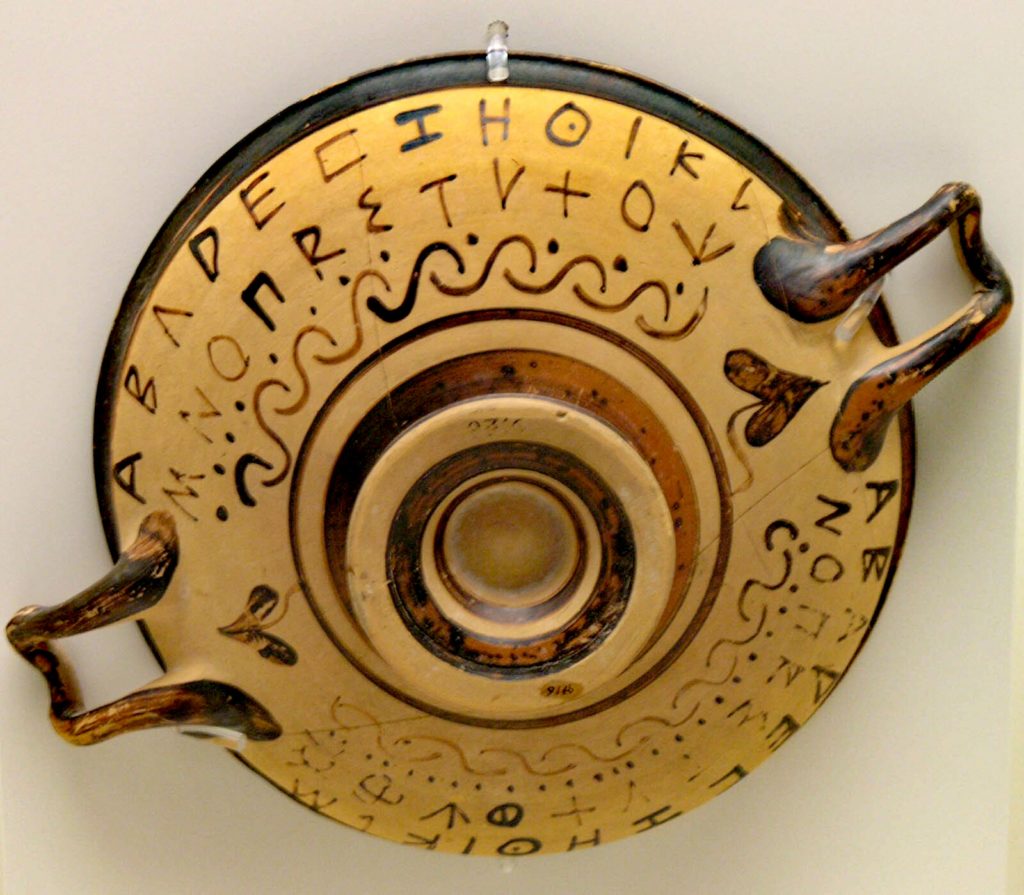
At the beginning of the historic period, Greeks did not all speak in the same manner. Just as the local alphabets differed, the ancient Greek language also varied from place to place. The main dialect groups were Attic and Ionic, Aeolic, Arcadocypriot, and Doric, many of them with several subdivisions (such as Macedonian Greek). Some dialects are found in standardized literary forms used in literature while others are attested only in inscriptions.
This great dialectical fragmentation of the ancient Greek language was due to the geography, with the mountainous massifs and the enclosed places of settlement, the dispersion of the numerous Greek tribes, and the initial isolation and political autonomy of the first residential centers. What is important, however, is that the social and intellectual factors that could have favored the final split and the creation of subsidiary languages never arose here, as happened for example with Latin.
On the contrary, the constant movements, economic activities, mixing of the tribes in the colonies, and conflicts with “barbarians” and different alliances contributed to the development of a common consciousness in terms of the origin, religion, myths and traditions as well as the unity of the language.
An additional important phenomenon in the history of the ancient Greek language is the fact that its dialectic diversity during the classical era is deeply reflected in the entire trajectory of ancient literature. Dialects decisively and completely influence ancient poetic and prose discourse. This means that every literary work was born, shaped, and developed closely linked to a certain dialect, the dialect of the Greek tribe which, due to a particular temperament and various socio-economic factors, created the specific literary genre for the first time.
Αnother peculiarity of Greek writing in the beginning of the archaic period, which is also found in earlier civilizations, is the so-called “Boustrophedon” style of writing. In this style, alternate lines of writing are reversed with letters also written in a reverse, mirror-style in contrast to our modern style of writing in which lines always begin on the same side, namely the left.
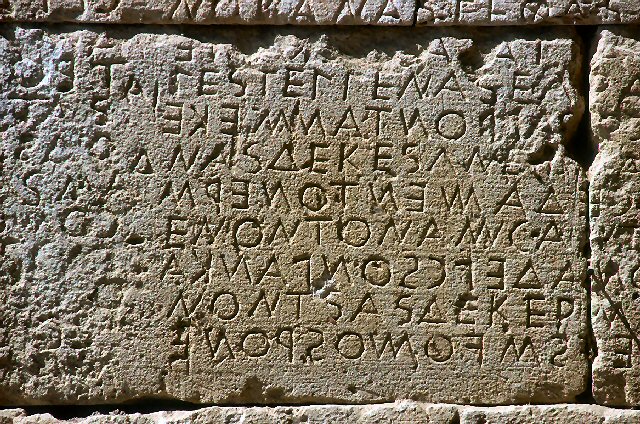
The original term comes from the ancient Greek term “βουστροφηδόν,” a composite of βοῦς (ox) and “στροφή” (turn)—that is, “like the ox turns [while plowing].” It is mostly seen in ancient manuscripts and other inscriptions. It was a common way of writing on stone in ancient Greece, becoming less and less popular throughout the Classical period. According to the Greek grammarian Harpocration, Solon’s Laws were written in boustrophedon.
Hellenistic Greek (Koine)
Hellenistic Greek evolved from the spread of the Greek army following Alexander the Great in his conquests during the 4th century BC. Consisting of the dialect of Athens, the intellectual capital of the time, the fusion of Ionian with Attic resulted in the first common Greek dialect. Also known as Alexandrian dialect, Biblical, or Koine Greek, it soon became a lingua franca across the Eastern Mediterranean and Near East, spoken from the Balkans to Egypt and from Magna Graecia to the fringes of India.
The concept of Koine derives from the Greek term for “the common dialect” (Greek: “ἡ κοινὴ διάλεκτος). Basic sources of the Hellenistic Koine are the inscriptions and the various literary or other texts that have survived to this day. However, for this period, there are also new categories of sources, including abundant, critical data. These are innumerable letters or documents on papyri found in Egypt. They refer to all kinds of public or private activities of citizens of just about any social or professional class as well as writings of philologists and grammarians.
Koine is also the language of the Christian New Testament, of the Septuagint (the 3rd century BC Greek translation of the Hebrew Bible), and of most early Christian theological writing by the Church Fathers. In this context, Koine Greek is also known as “Biblical,” “New Testament,” “ecclesiastical,” or “patristic” Greek and was used as the liturgical language of services in the Greek Orthodox Church.
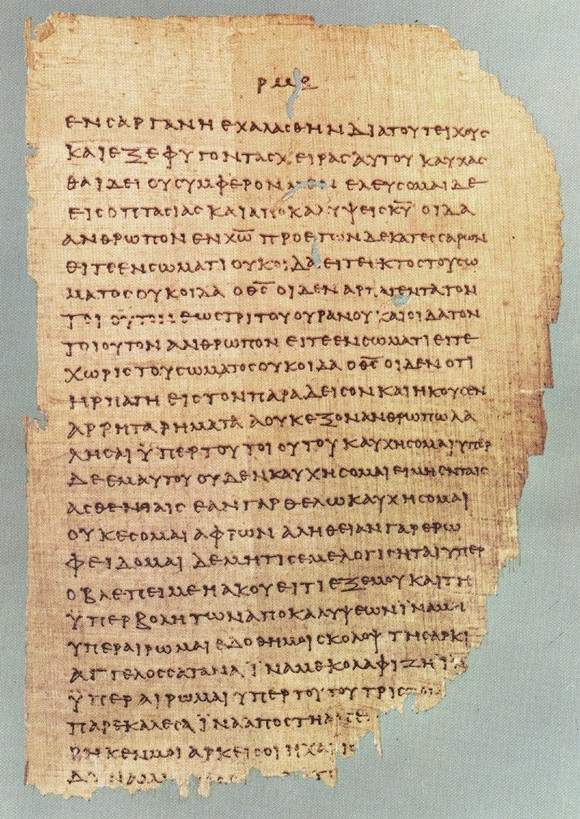
As the dominant language of the Byzantine Empire, it developed further into Medieval Greek, which then turned into Modern Greek.
Medieval Greek
Medieval Greek (also known as Middle Greek, Byzantine Greek, or Romaic) is the stage of the Greek language between the end of classical antiquity in the 5th to 6th centuries and the end of the Middle Ages, conventionally dating to the Ottoman conquest of Constantinople in 1453.
During the early medieval time period from the 4th to 11th centuries, evidence for the evolution of the Greek language is scant. Byzantine scholars attached to the tradition of the Fathers of the Church write in an archaizing language which depicts a progressive incomprehensibility in the syntax. This is probably the only development at this time.
However, in certain popular folk texts, we observe the spoken, natural, and straightforward language being smoothed out and simplified phonetically and morpho-syntactically even more than the Hellenistic common, while the influence of Latin is important in the vocabulary.
Τhe Greek language, unlike Latin, continues its course as the linguistic instrument of the large Greek-speaking empire. The role of the Greek language as the linguistic instrument of the Byzantine Empire was supported by strong feelings of continuity with the past.
Because the Greek-speaking central authority and Church adopted this archaic form of Greek as an official instrument of expression, they created a linguistic policy of continuity and the sense that the language of the Eastern Roman Empire was one and the same as the language of the past. In other words, it had not changed—it seemed.
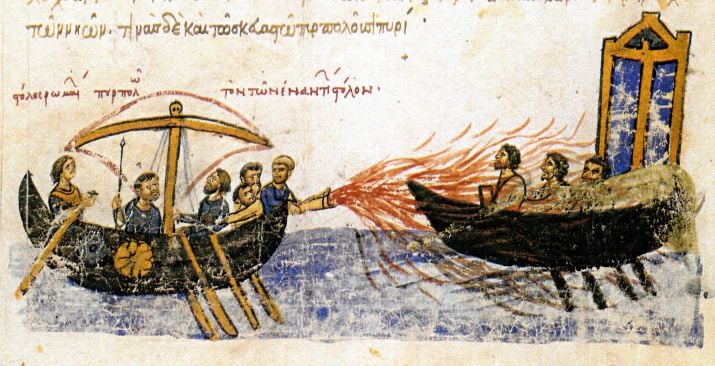
As early on as the Hellenistic period, there was a tendency towards a state of “diglossia” (a situation in which two dialects or languages are used in fairly strict compartmentalization by a single language community) between the Attic literary language and the constantly developing vernacular Koine. By late antiquity, the gap had become impossible to ignore. In the Byzantine era, written Greek manifested itself in a whole spectrum of divergent registers, all of which were consciously archaic in comparison with the contemporary spoken vernacular, but in different degrees.
Despite the large gaps in the information we have about the spoken forms of the language up to the 12th century, it is most likely that the neo-Greek language was formed in this period of time. In the last centuries of the Byzantine Empire, (Late period, 12th to 15th centuries), the relevant sources show that the Modern Greek language was almost formed with little differences from the modern, common, oral idiom. At the same time, there continue to be new dialectal variations.
Modern Greek
During the period of Ottoman rule, Modern Greek was fully developed while at the same time dialects and idioms stood out. The cause of this was the secession of various Greek-speaking regions of the Byzantine State as early as the 13th century and their different fates under various conquerors (Francs, Venetians, Turks) as well as the isolation, drop in living standards, and lack of Greek education during the first centuries of Ottoman rule.
Beginning in the 19th century, a process of replacing the many Turkish words, as well as rendering neologisms of Western culture in the material and spiritual field, began. At the same time, controversy arose over the form of the language of the reborn Greek nation after the establishment of the new Greek State. There was also debate over the form of the official language. In modern Greek, pronunciation of the language changed, but the style of writing remained the same.
The spoken—and, consequently, also written—common modern Greek language has as its basis the characteristics of the idioms of the Peloponnese, Central Greece, Aegina, and old Athens, the first places from which the new state was formed.
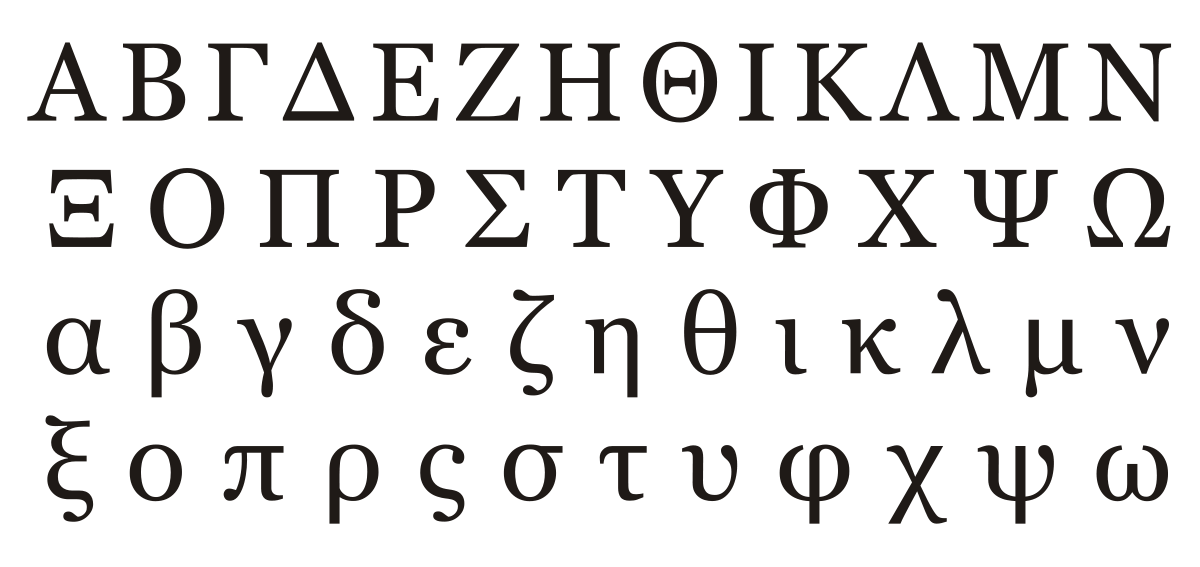
Most scholars considered the oral common language of the people insufficient and advocated a return to more archaic forms of Greek, while others believed in the cultivation and development of the popular language (Demotic). Adamantios Korais proposed the purification and beautification of the popular language and thus became the initiator of “Katharevousa,” the first official language of the state. Katharevousa, which slips into archaism, distanced itself from the natural language, thus creating the “Greek language question” that plagued Greek education until the last quarter of the 20th century.
Since the fracturing of the Byzantine state after the turn of the first millennium, newly isolated dialects, such as Mariupol Greek, spoken in Crimea, Pontic Greek, spoken along the Black Sea coast of Asia Minor, and Cappadocian, spoken in central Asia Minor, began to diverge. In Griko (Katoitaliotika), a language spoken in the southern Italian exclaves, and in Tsakonian, which is spoken in the Peloponnese, dialects of older origins continue to be used today. Cypriot Greek was already in a literary form in the late Middle Ages, being used in the Assizes of Cyprus and the chronicles of Leontios Makhairas and Georgios Boustronios.
With the establishment of the modern Greek state and the continuous spread of the new common language, the progressive weakening of the various dialects began. From the cities, which functioned as administrative, political, and intellectual centers, the common language spread to the periphery where various idioms or dialects prevailed.
See all the latest news from Greece and the world at Greekreporter.com. Contact our newsroom to report an update or send your story, photos and videos. Follow GR on Google News and subscribe here to our daily email!



